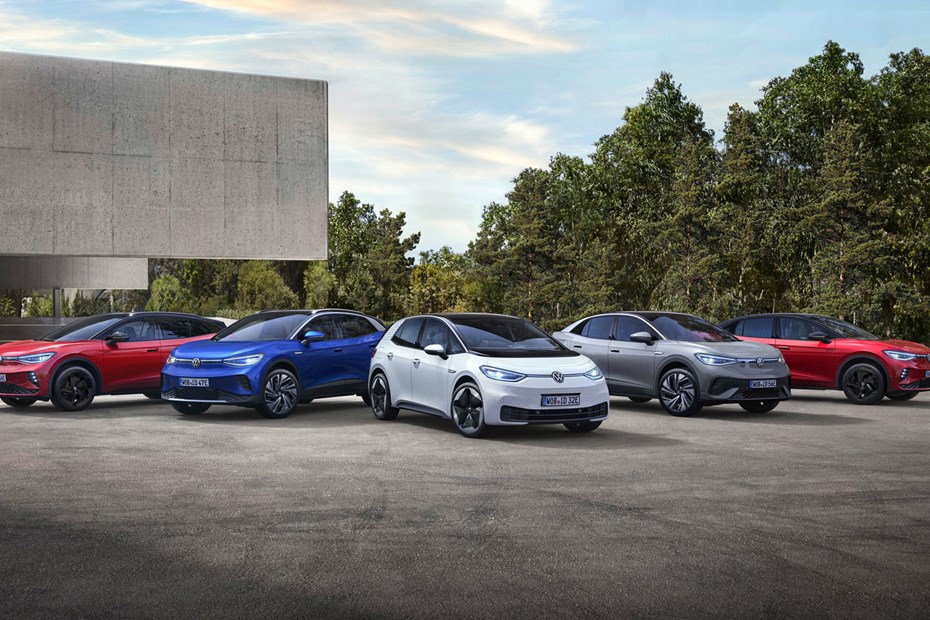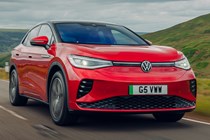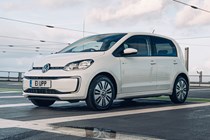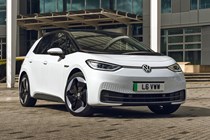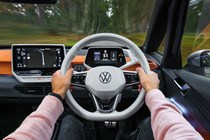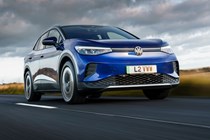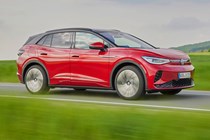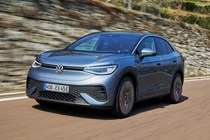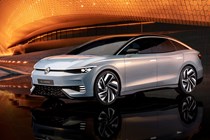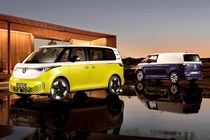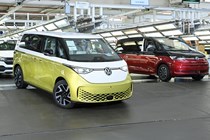While Volkswagen has experimented with electric cars for decades, it wasn’t until 2014 that it launched its first production models that you could easily buy in a showroom. What’s more, in contrast to other carmakers – and the way it does things now – the first VW electric cars, the e-Golf family car and e-Up city car, were adaptations of existing models, rather than bespoke electric vehicles (EVs).
This has helped normalise the idea of electric mobility for Volkswagen buyers, and if you’re shopping second-hand, both represent excellent used electric car choices – though later versions are better than the earliest examples as they have bigger batteries. As such, consider seeking out an e-Golf built from 2017 or an e-Up built from 2019 (the closely related SEAT Mii electric and Skoda Citigo-e are similarly attractive to the latter).
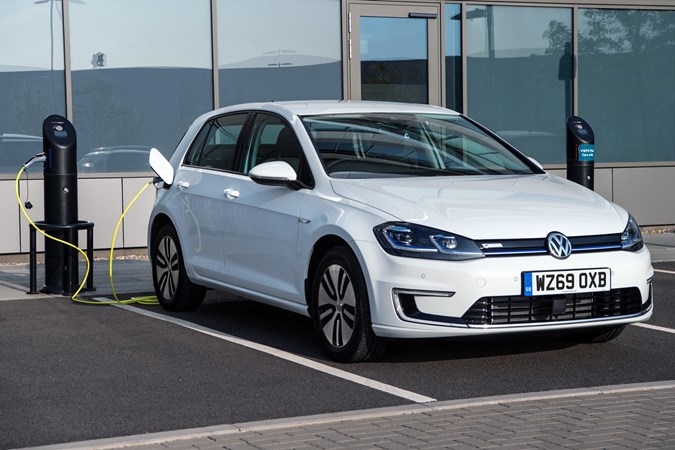
However, these are not available to buy new any longer, as Volkswagen quickly realised the limitations of doing things this way. It has turned instead to building the present range of VW electric vehicles on a dedicated technology platform known as the MEB architecture.
These latest Volkswagen electric cars are easily identified not only by their smoothly futuristic appearance but also their ID model names – we’ve listed every example you’ll find in a showroom now below, and there’s info on forthcoming models at the bottom of the page, too.
VW electric cars available in the UK now
Volkswagen ID.3
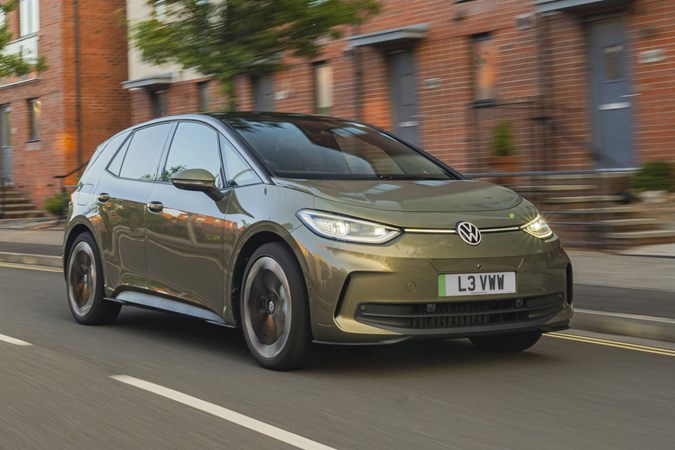
Described by VW as its third era of car development (after the Beetle and Golf), the Volkswagen ID.3 is the family sized model that launched the firm’s dedicated electric vehicle tech. Spacious and just the right side of wacky inside, it offers great battery range and performance (which can be balanced against price, depending on spec), and has already developed a keen following since its launch as the replacement for the e-Golf in 2020.
Facelifted in 2023, rivals range from the Citroen e-C4 and MG4 EV to the Tesla Model 3, while the Cupra Born is the same car with more flamboyant trousers. If you can put up with the interior design – which includes some slightly shonky plastics and an infotainment / button system that may make you want to punch someone until you get used to it – the ID.3 is an excellent measure to judge other family electric cars against.
Search for new and used Volkswagen ID.3s
Search Volkswagen ID.3 lease deals
Volkswagen ID.4
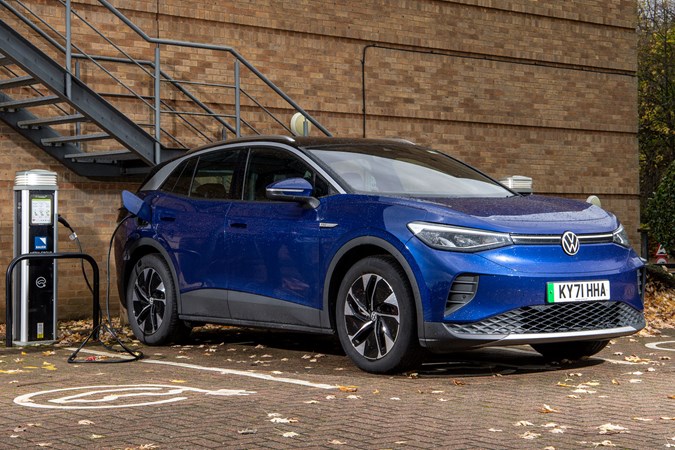
The Volkswagen ID.4 is the ID.3’s SUV-style big brother. It’s based on the same platform and tech, but is bigger and taller – making it closely related to other larger Volkswagen Group electric cars such as the Skoda Enyaq. It’s more spacious inside than an ID.3, but is similarly styled and suffers with the same frustrating infotainment system and other touch-sensitive controls.
Still, performance and battery capacity are right up there – with up to 323 miles of claimed driving range available from the most capable models. It’s a quiet and relaxing vehicle to drive, too, though consequently not as nimble or involving as some rivals. Competitors range from the Peugeot e-2008 and Kia Niro EV at the cheaper end to the Volvo EX40 and Ford Mustang Mach-E if you’ve got a more generous budget.
Search for new and used Volkswagen ID.4s
Search Volkswagen ID.4 lease deals
Volkswagen ID.5
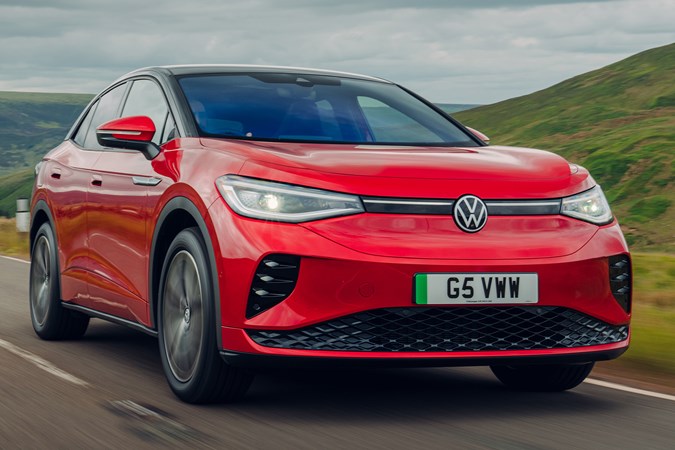
Somewhat predictably, the Volkswagen ID.5 is a coupe-roofed version of the ID.4. This doesn’t impact practicality quite as much as you might think, as this is still a five-door SUV with a big boot above all else. But as the design also pushes prices higher, the quality of the interior – still similar to the ID.3 and ID.4 – starts to grate a little more, and yes, the lack of proper buttons on the inside is likely to have you pulling your own and other people’s hair out until you get used to it.
Again, driving range – up to 316 miles WLTP – and performance are plus points; with the GTX model producing 299hp and driving all four wheels, it’s pretty rapid. But despite the more emotional body style, it’s not really any more exciting to drive. A good solid choice, but not a thriller. Rivals include its Audi Q4 Sportback E-Tron and Skoda Enyaq Coupe cousins, plus the Hyundai Ioniq 5, Kia EV6 and Tesla Model Y.
Search for new and used Volkswagen ID.5s
Search Volkswagen ID.5 lease deals
Volkswagen ID.7
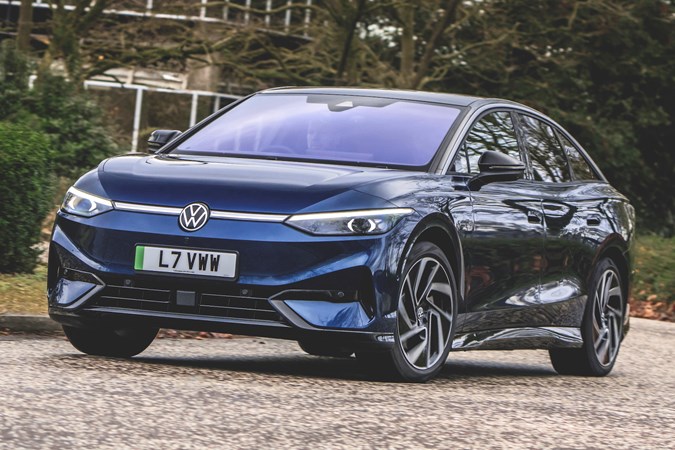
This is the Volkswagen ID.7, the firm’s flagship electric car. It’s a large five-door hatchback that replaces the stylish Arteon Coupe and Passat Saloon, and arguably picking up the mantle of the long-gone Phaeton. It’s altogether larger than the big selling Tesla Model 3, and aimed at a different set of buyers.
Whether you’re one of those is down to you. It has acres of room inside, a huge boot, and takes up a lot of road space. And that would put it up against the BMW i5 and Mercedes-Benz EQE, which are rather more expensive than VW’s more down-to-earth offering.
Search for new and used Volkswagen ID.7s
Search Volkswagen ID.7 lease deals
Volkswagen ID.Buzz and ID.Buzz Cargo
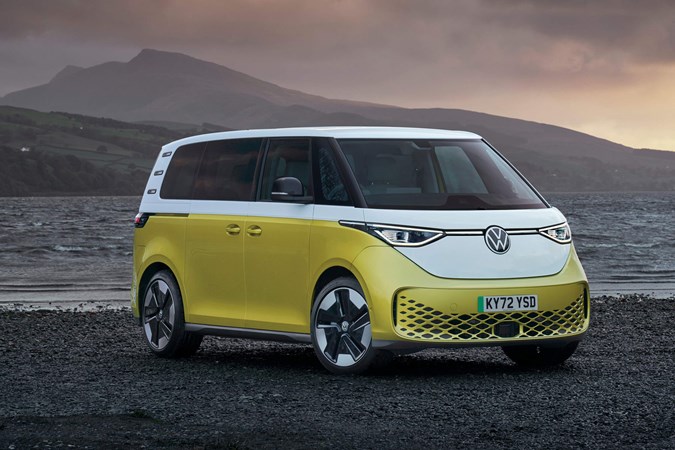
And now for something completely different. Although still based on MEB technology, the VW ID.Buzz brings retro looks and considerable versatility to VW’s range of electric cars. Paying homage to the original Volkswagen Microbus Transporter, the ID.Buzz is available as a large people carrier (MPV) or a van called the ID.Buzz Cargo. It looks brilliant, and is sure to be a real head-turner once the first customer cars hit the road before the end of 2022.
Available to order now, it’s not cheap at over £56,000 – but that’s similar to the cost of the plug-in hybrid variant of the Volkswagen Multivan, VW’s other large van-alike MPV. Similar battery and motor tech to other ID models means lots of power, performance and driving range, but van drivers may be disappointed to learn it’s of a style exercise than a true load hauler. Rivals include passenger carrying versions of electric vans such as the Citroen e-Berlingo and Vauxhall Vivaro-E.
Search for new and used Volkswagen ID.Buzz
Search Volkswagen ID.Buzz lease deals
Volkswagen electric cars worth waiting for
The VW electric car programme is really only just getting started, with smaller ID.1 and ID.2 models already on the cards.
The pair will aim to bring electrification to the city car and supermini segments – this is a difficult exercise in terms of cost effectiveness, so whether both will make it through to production remains to be seen.
These will be worth waiting for if you favour those sizes of vehicle and are keen to make the move to electric. And if you’re wondering about an ID.6, that’s already on sale – but only in China.
Once all of the above are in showrooms, VW will begin the process of launching its second-generation of electric car technology. Codenamed Project Trinity, this will be based around a new Scalable Systems Platform (SSP), which is said to be even more flexible than MEB.
We don’t expect to see the first production vehicles based on this until 2026, however. So if you’re interested in going electric now, it’s probably not worth holding out for whatever the first fruits of Project Trinity turn out to be.



